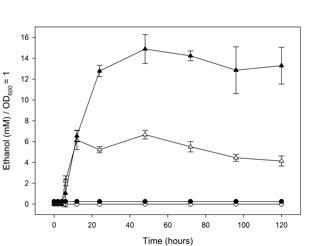volume EM visualisation of synthetic scaffolds in bacteria
Posted by Janithri Wickramanayake, on 27 June 2025
by Matthew J Lee1, Judith Mantell2, Martin Warren1, Paul Verkade2, et al.
1University of Kent, UK; 2University of Bristol, UK
Challenge
Synthetic or Engineering Biology takes inspiration from nature to produce newly designed structures with the aim to improve its function, e.g. to produce “cell factories” with enhanced biological capabilities.
We set out to produce a completely novel structure in bacteria for directing and aligning biosynthetic pathway enzymes and enhance production of chemicals. Importantly, no current approach has delivered a uniform matrix throughout the bacterial cytoplasm. For these reasons, we sought to construct a simple and modular bacterial cytoskeleton –which we termed a “cytoscaffold”- using components that we can understand and manipulate predictably.
Here, we have taken one component from 200-500nm enclosed bacterial micro compartments (PduA) and redesigned it (called PduA*) to be re-expressed in a bacterial strain without such microcompartments.
Technique: ssTEM (serial section)
3D rendering of PduA* filaments in Escherichia coli based on serial thick section Electron Tomograms. Analysis of the tomograms confirmed the presence of filaments (in red) throughout the cytoplasm, Example of the ss-ET available under:
https://doi.org/10.5523/bris.2rs1b7aos2phw2adt5mynggcmc. scalebar = 500nm

Research
Construction of cytoscaffold: The study describes the creation of functionalised hexagonally arrayed, tubular filaments of the PduA* protein to organise proteins within bacterial cells.
1. Localisation of fluorescent proteins to a bacterial cytoscaffold. By tagging PduA* with a fluorescent protein (e.g. GFP) we demonstrate that cargo proteins can be directed to the cytoscaffolds (scale bar 500nm).

2. TEM Analysis: (250nm serial section) Transmission Electron Tomography (ss-ET) was used to analyse E. coli cells transformed with various constructs, showing detailed structural information.
3. Ethanol Production: The study also explored the potential of engineered strains to produce ethanol, showing enhanced production of ethanol content in the engineered bacteria (top line) compared to non-cytoscaffold cells (middle line).

Impact
• We have created a system that produces a supramolecular scaffold that can be functionalised for the production of biofuel: https://www.bristol.ac.uk/news/2017/december/discovery-marks-new-era-in-cellular-design.html
• This study shows the power of volume EM in the field of Synthetic Biology.
References
Lee, M., Mantell, J., Hodgson, L. et al. Nat Chem Biol 14, 142–147 (2018). doi: 10.1038/nchembio.2535
Poster



 (No Ratings Yet)
(No Ratings Yet)